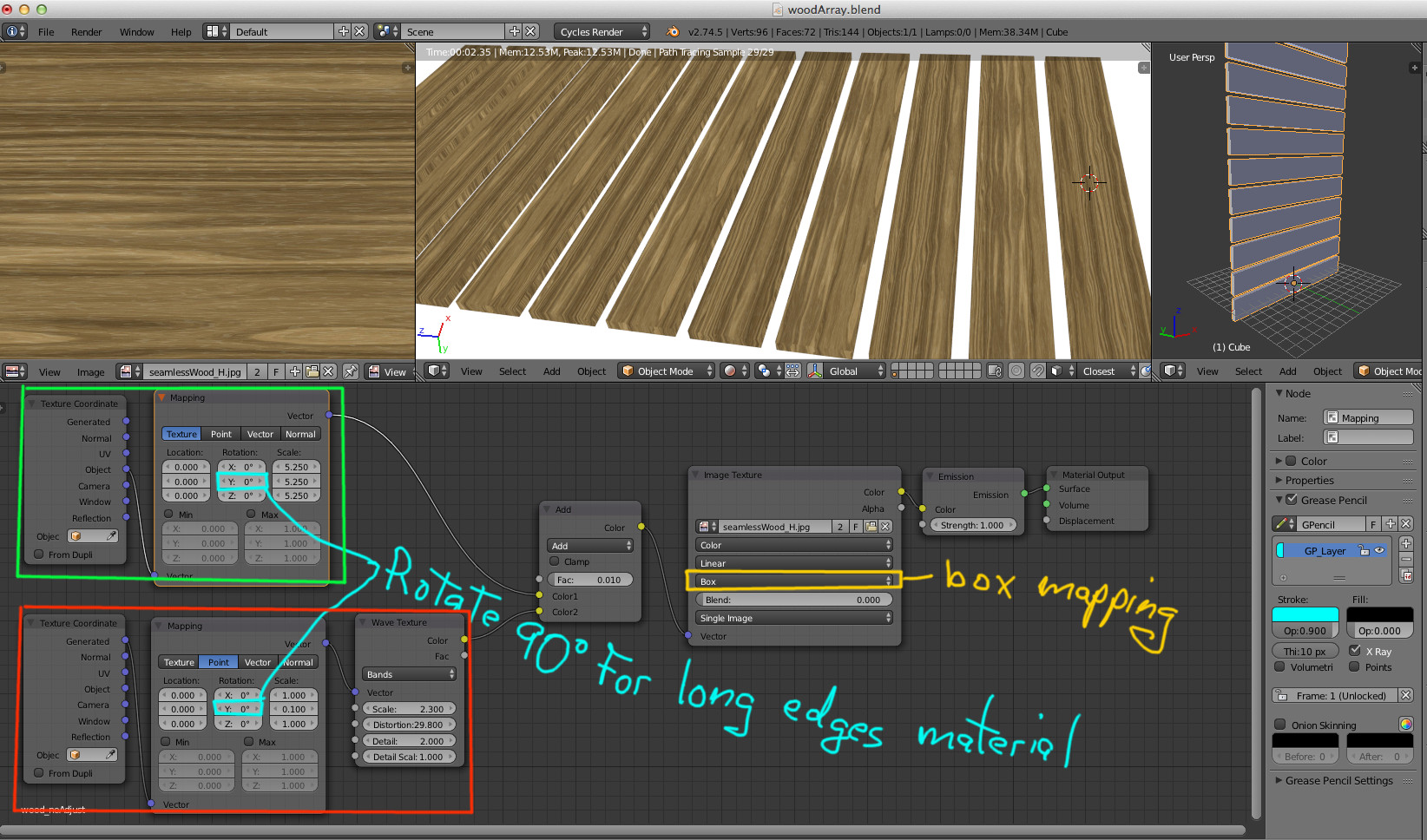I'm trying to model some house siding. I'm using a single board with an array modifier. The problem is that when I go to texture them I can only texture the first one, and they all have the same texture. How can I offset the texture so that each new board on the array modifier has a different texture?
Here's a picture:
All the boards are an array from a single board, and I'd like to be able to offset the texture for each new board, but have no idea how. Here's the texture I'm using (Image 2). http://tinyurl.com/poyjn4u (CGTextures)
I'd also (preferably) not have to apply the array modifier before offsetting the textures, but if that's not possible, that's fine.
Edit: The duplicated question does in no way answer my question, and is quite different. The only detailed answer is referring to generated textures, I'm using an image texture. Please explain how my question is answered in the other question marked as duplicate. The previous person who asked a similar question to mine commented on the first answer that he could work with generated textures, I cannot use generated textures in this situation.



